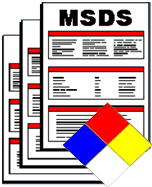SUPDET 2016 – Conference On Suppression & Detection
 NFPA’s Fire Protection Research Foundation hosted this year’s conference on suppression and detection in San Antonio, Texas. Presented were the latest research and developments in the fire protection industry that included a diverse cross-section of subjects, such as ‘ESFR K14 sprinklers and High Clearance Update’, ‘Biomass Commodity Classification’, ‘Sub-Scale Analysis of New Large Aircraft Pool Fire-Suppression ‘, ‘Lithium-ion Energy Storage System Fires’ and many more.
NFPA’s Fire Protection Research Foundation hosted this year’s conference on suppression and detection in San Antonio, Texas. Presented were the latest research and developments in the fire protection industry that included a diverse cross-section of subjects, such as ‘ESFR K14 sprinklers and High Clearance Update’, ‘Biomass Commodity Classification’, ‘Sub-Scale Analysis of New Large Aircraft Pool Fire-Suppression ‘, ‘Lithium-ion Energy Storage System Fires’ and many more.
NFPA’s blog, ‘NFPA Today‘, lists a complete set of topics, with each topic including a link to download a pdf-version of the actual presentation. The various presentations were categorized into ‘detection’ and ‘suppression’ subjects, with each of the categories being subdivided into individual sessions discussing specific topics of interest.
————————————————-SUPPRESSION PROGRAM————————————————-
Keynote: History of Fire
Dick Gann, National Institute of Standards and Technology (NIST)
Session I: Warehouse Sprinkler Protection
Early Suppression Fast Response Sprinklers and Obstructions
Garner Palenske, Aon Fire Protection Engineering Corporation
ESFR K14 and High Clearance Update
Lorin Klein, Whirlpool, James Golinveaux, Tyco Fire Protection Products, Christopher Gates, Underwriters Laboratories (UL), Rich Gallagher, Zurich Services Corporation
A Numerical Study on the Effect of Ceiling Slope on Sprinkler Activations and Spray Transport
Prateep Chatterjee and Karl V. Meredith, FM Global
Biomass Commodity Classification
Erin G. Webb, Ph.D., Oak Ridge National Laboratory, Daniel Steppan, Underwriters Laboratories (UL)
New Technology for Sprinklered High-Challenge Warehouses
Christina Francis, P&G
Session II: Applications
Sub-Scale Analysis of New Large Aircraft Pool Fire-Suppression
Christopher P. Menchini, Applied Research Associates, Inc., Steven P. Wells, Vulcan Research and Controls, LLC, John R. Hawk, Air Force Civil Engineer Center
Quantifying the Impact of Portable Fire Extinguisher Agents on Cultural Resource Materials
Matthew Benfer, Jensen Hughes
Feasible fire protection solutions for long underground cable tunnel in UAE: a case study
Mukesh Singh Tomar, NFPA member
Session III: Water Mist
Water Mist System Test Methods: Comparison of FM, UL, and IMO Procedures
Jason Huczek, Southwest Research Institute (SWRI)
Development of a 1.5 GPM, Sprinkler Equivalent, Residential Water Mist Suppression System
William Makant, Plumis
Session IV: Protection of Li-Ion Batteries
Preventing Cell-to-Cell Thermal Runaway in Li-ion Battery Packs by Means of Fluid Application
Mark Smith, Nicholas Johnson, William Meyring, Paul Rivers, 3M
Lithium-ion Energy Storage System Fires
Andrew F. Blum and R. Thomas Long, Exponent, Inc.
Cartoned Lithium Ion Battery Storage Sprinkler Protection
Ben Ditch, FM Global, R. Thomas Long, Exponent, Inc.
Session V: Clean Agents and Foam
Experimental Research on the Jet-Distance of FK-5-1-12 Droplets after their Discharge out of a Fire Protection Nozzle
Hauke Petersen and Gudrun Fay, Ph.D., Minimax GmbH & Co.
Siloxane-Based AFFF: Testing of Experimental Foam Concentrates
Ralf Helmut Hetzer, Felix Kümmerlen, Angela Sager-Wiedmann, Bundeswehr Research Institute for Protective Technologies and NBC-Protection
————————————————-DETECTION PROGRAM————————————————-
Session I: Residential Applications
Public Benefits to a Smoke Alarm Performance Evaluation Scheme
Arthur Lee, Consumer Products Safety Commission (CPSC), Everett Baker, Tyler Bennett, Jimmy Mosteller, and John Williams, Worcester Polytechnic Institute (WPI)
Improving Data Collection of Smoke Alarms in Fires
Joseph M. Fleming, Boston Fire Department, Vyto Babrauskas, Ph.D., Fire Science and Technology, Inc.
Experimental Investigation of Using CO Sensors to Detect Smouldering Fires in Dwellings
Christian Sesseng and Nina Kristine Reitan, Ph.D., SP
Session II: Detection Research
Influence of the Operating Time on the Behaviour of Smoke Alarms in Typical Office Environments
Ingolf Willms, Ph.D., Thorsten Schultze, Ph.D., Lea Marcius, and Wolfgang Krüll, University of Duisburg-Essen
Development and Testing of a Targeting System for Localized Suppression
Ian McNamara, FireStrike Industries LLC., James Andy Lynch, Fire Risk Alliance
Effect of Detector Sensitivity Changes on the Provision of Adequate Warning to Building Occupants
James Milke, University of Maryland, John Vythoulkas and Yun Jiang, Xtralis
A Novel and Cost Effective Radiant Heat Flux Gauge
S. Safaei and A.S. Rangwala, Worcester Polytechnic Institute (WPI), V. Raghavan and T.M. Muruganandam, Indian Institute of Technology Madras, L. Genovesi, Global Fire Products, Inc.
A Fire-Induced Displacement Estimation Method for Civil Infrastructures
Gunhee Koo, Jaemook Choi, Kiyoung Kim, and Hoon Sohn, Korea Advanced Institute of Science and Technology
Session III: Smart Building Applications
Indoor Positioning Systems Enhance Safety and Security in Buildings
Oliver Zechlin and Lance Rütimann, Siemens Switzerland Ltd.
Session IV: Signaling and Notification
Visual Alarm Devices – Their Effectiveness in Warning of Fire
Raman Chagger, BRE Global Limited
Occupant Evacuation Elevator (OEE) Case Studies
Eric Camiel, Jensen Hughes
Session V: Nuisance Sources
Impact of Smoke Alarm Performance Considering New Nuisance and Fire Tests
Thomas Cleary, National Institute of Standards and Technology (NIST)
Beyond Cooking: Smoke Alarm Nuisance Sources Evaluated
Joshua Dinaburg, Jensen Hughes
Session VI: Smoke Characteristics and Detector Design
Multi-angle Multi-wavelength Light Scattering of Smokes and Cooking Aerosols
Thomas Cleary and Amy Mensch, National Institute of Standards and Technology (NIST)
Physics Based Assessment of Light Scattering in Multi-Color Smoke Detection
Michael Birnkrant, Ph.D., Marcin Piech, Ph.D., and Peter Harris, Ph.D., United Technologies Research Center





